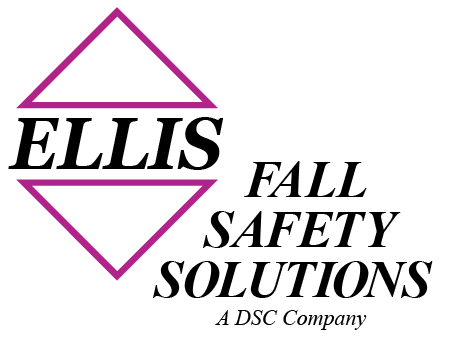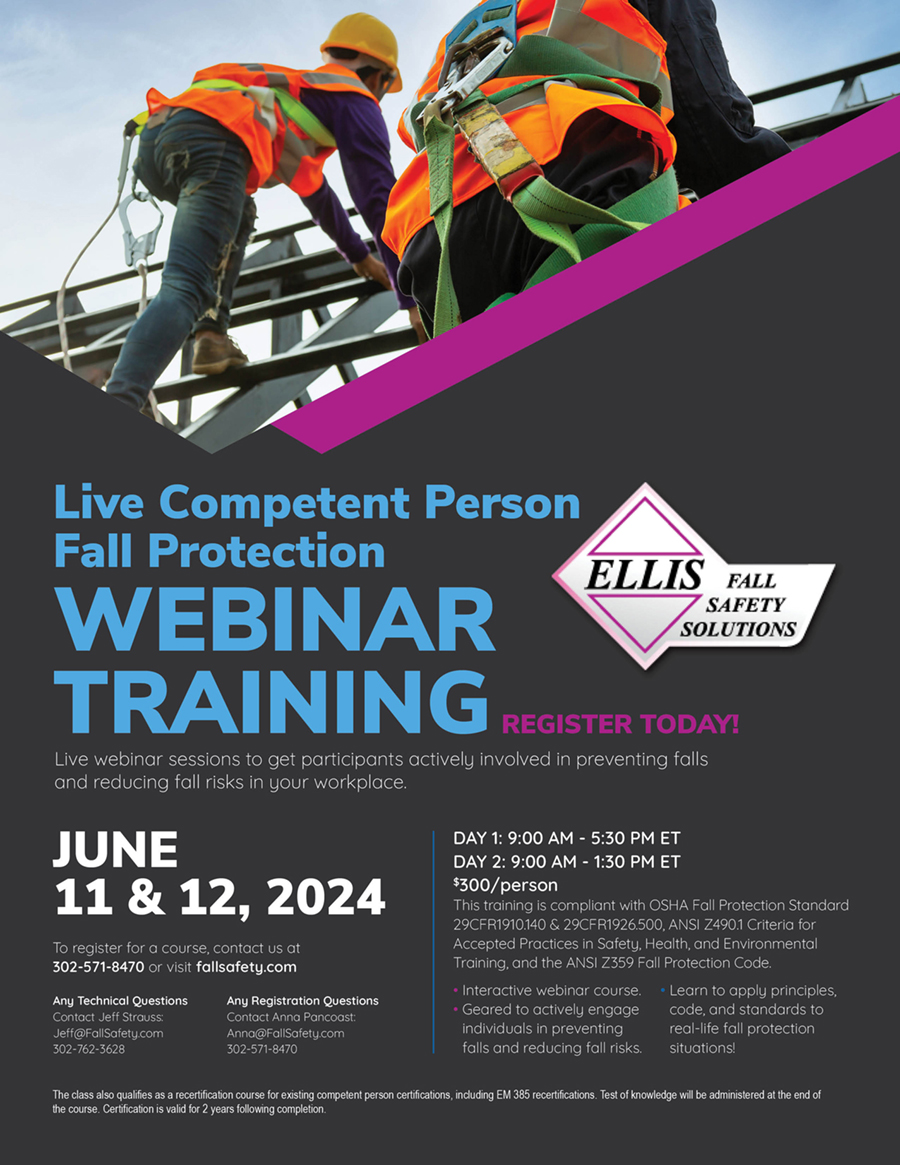Tip of the Week No. 263 – 11/02/09 – Tower Maintenance
For maintenance of towers, standard ladder and rail-type climbing protection systems are typically used. Use of cable-type systems is debatable because wind can cause damage by flapping and beating cable against the structure if the line is released from intermediate supports.
See”Introduction to Fall Protection, 3rd Edition” page 171.
This book is an invaluable resource for every safety manager’s library. Click here to find out about ordering a copy. Order online now.
Tip of the Week No. 240 – 03/02/09 – Towers
Tower Work:
The use of the hoist for elevating construction workers onto towers over 200 feet is provided for in OSHA CPL 2-1.29.
Many requirements for the safety of components are called for, and fall protection is required above the hook.
For maintenance of towers, standard ladder and rail-type climbing protection systems are typically used.
Use of cable-type systems is debatable because wind can cause damage flapping and beating cable against the structure if the line is released from intermediate supports.
See “Introduction to Fall Protection, 3rd Edition” page 171.
This book is an invaluable resource for every safety manager’s library. Click here to find out about ordering a copy. Order online now.
Tip of the Week No. 233 – 01/05/09 – Tower Maintenance
For the maintenance of towers, standard ladders and rail-type climbing protection systems are typically used. Use of cable-type systems is debatablebecuase wind can cause damage by flapping and beating cable against the structure if the line is released from intermediate supports.
Indoors and at low heights, cable systems are weather-protected and help prevent corrosion for the single-attachment-point system. Climbing while using two lanyards is a process of last resort; it interferes with vital hand-grip sequence, unduly tires the climber, and subjects him or her to nonapproved anchor points, such as corroded rung welds and weakened struts.
See “Introduction to Fall Protection, 3rd Edition” page 171.
This book is an invaluable resource for every safety manager’s library. Click here to find out about ordering a copy. Order online now.
Tip of the Week No. 111 – 05/08/06 – First Up Tower Climbers
A first-worker-up, portable climbing system consists of a shepard hook on a pole, which incorporates a retracting lifeline or rope grab, and can be pushed up to snag structural members.
After climbing approximately 18 to 20 feet, the climber belts-off before pushing the pole further up the tower.
Portable systems can be used safely if they are practical and if the users avoid contacting electrical conductors.
See “Introduction to Fall Protection, 3rd Edition” page 247.
This book is an invaluable resource for every safety manager’s library. Click here to find out about ordering a copy. Order online now.
Tip of the Week No. 67 – 05/02/05 – Tower Work
Tower Work:
The use of the hoist for elevating construction workers onto towers over 200 feet is provided for in OSHA CPL 2-1.29.
Many requirements for the safety of components are called for, and fall protection is required above the hook.
For maintenance of towers, standard ladder and rail-type climbing protection systems are typically used.
Use of cable-type systems is debatable because wind can cause damage flapping and beating cable against the structure if the line is released from intermediate supports.
See “Introduction to Fall Protection, 3rd Edition” page 171.
How about ordering a copy of for yourself? Order online now.
09/17/04 – Safety News Item. Proposed NC tower law; follow-up to 08/20/04 item.
Proposed NC safety rules for the construction, operation and maintenance of towers would require, among oter things, 100% fall protection at above 6 feet unless no anchorage points exist and other protection systems would create a greater hazard to workers.
Several industry spokesmen have spoken out against the proposed regulations with one, Patrick Howey of the National Association of Tower Erectors stating, “What appears reasonable on paper is not aways reaonable or safe for workers on site.”
Comments will be accepted until 10/01/04 and should be sent to John Hoomani, assistant deputy general counsel, NC Department of Labor, 1101 Mail Service Center, Raleigh, NC 27699-1101, or faxed to 919-733-4235 or emailed to jhoomani@mail.dol.state.nc.us.
08/20/04 – Safety News Item. Tower Safety.
Hearings to begin formal rulemaking concerning worker safety for telecommunications towers are underway in North Carolina.
These will be the first standards to specifically address worker safety issues related to the construction, operation, and maintenance of communications towers.
Tower erection responsible for many construction fatalities
The OSHA Advisory Committee on Construction Safety & Health met on the 15th September 2000 and one of its members declared that the death toll “carnage” was unacceptable from communication tower construction. The committee recommended to OSHA that top priority be given to the industry and perhaps an emergency standard was needed. Assistant Secretary Charles Jeffress said the agency has begun discussions with NATE, the National Association of Tower Erectors, on what action may be appropriate beyond the CPL 2-1.29 issued in January 1999. This industry has approximately 9,000 workers compared with about 7 million in all U.S. construction.
Tip of the Week No. 343 – 12/17/2012 – Step Bolts
Alternatives to ladders are alternating or parallel-step bolts along a pole or transmission tower for vertical access. The steps are typically 14-16 inches apart, which is within the range for descent without lunging at a step, thereaby imparting an impact load. Frequently, portable single-rail ladders are attached to slots on steel poles used for utilities and telecommunications purposed.
See “Introduction to Fall Protection, 4th Edition” page 125.
Introduction to Fall Protection, 4th Edition now available for purchase. To order your copy call 1-800-372-7775 or order online at Introductionto Fall Protection, 4th Edition Orders.
Please select a category from the list below
- Aerial Lifts/Platforms
- Anchorage Points
- Calculations
- Construction Contracts
- Consulting
- Cranes
- Descent Devices
- Ellis Articles
- Ellis Presentations
- Equipment Maintenance
- Ergonomics/Human Factors
- Fall/Safety Statistics
- FP systems, programs
- Guardrails
- Harnesses, FP Equipment, HLL, SRL
- Hazards
- Holes/Pits
- Ladders
- Lanyards/Twin Tail Lanyards
- Misc.
- Nets
- New
- NIOSH
- OSHA News/Citations
- PFAS
- Rescue
- Roofs
- Ropes
- Safety Cases
- Safety Organizations
- Scaffolds
- Skylights
- Stairs
- Standard/Regulations
- Steel Erection
- Tanks
- Towers
- Training
- Tree Stands
- Trucks
- Tying Off
- Veterans of Safety
- Window Cleaners
- Workers Comp

